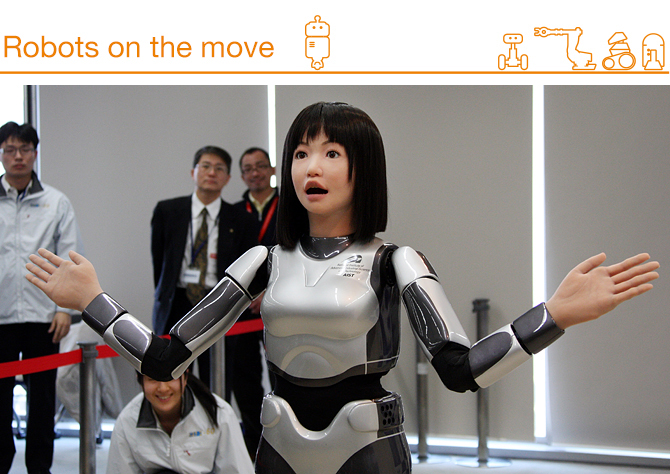
Sexism extends to robots
What gender are the robots that are taking over more and more of our chores? Does it matter whether we call them, "he" or "she"?
"People have a clear tendency to assign gender to products and technologies. I doubt we'll ever have gender-neutral robots," says Sara Ilstedt, professor of product and service design at KTH.
One way we reduce uncertainty about new technology is to humanize it. The next step, naturally, is to give the robot a gender.
"We interpret different properties of machines to make it easier to relate to them, and interact with them," she says.
In 20 years, half of all jobs in Sweden are expected to become automated or digitized. Up until now, robots have mainly been used in heavy manufacturing and in closed systems, but we will soon see robots take on domestic services.

In Japan, where service robots are already becoming common, consumers are thought to more readily adopt the technology if the machines are assigned genders. And even in the case of gender-neutral robots, people persist in determining their sex.
"Care robots, for example, are referred to as 'she', which is also the case with other supportive and helpful robots", Ilstedt says. "At the same time, the technology itself is often masculine-coded. Sexless machines tend almost always to be masculine."
Voice, shape, gestures, features, names and types of chores define a robot's character, which can often be associated with a particular gender.
These codes are strong, so design becomes important for attracting meaningful interaction. The risk is that technology and equipment becomes limiting through its coding.
How does one avoid reinforcing gender stereotypes in the robot world?
"We easily form simplistic views of what is feminine and what is masculine. We have to be conscious of that. A robot doesn't have to be either or — it can be both masculine and feminine. Why not gay robots?"
The effort to create recognition and acceptance of new products is often so that they resemble something we already know. New interfaces relate to something the user is accustomed to, such as your computer's desktop.
"Because robots are based on man, it's easy to think 'he' or 'she' and the various properties associated with genders. But why not be daring, and play with forms and expressions and create some third form of gender?"
In mixing gender roles, it's not enough just to adopt the opposite of prevailing attitudes, she says, playing with the idea that health care or social robots could be coded male.
"It is too simple and it can easily get into inverted and politically correct stereotypes instead. So you have to think. One must not forget the cultural context that also varies."
Giving technology a connotation that consciously connects to a sex can of course also be attractive and attract both consumption and usage.
"When I was younger I always thought this idea of technology designed specifically for women or men was ridiculous. But now I think it's more a question of promoting female-coded technology."
Jill Klackenberg